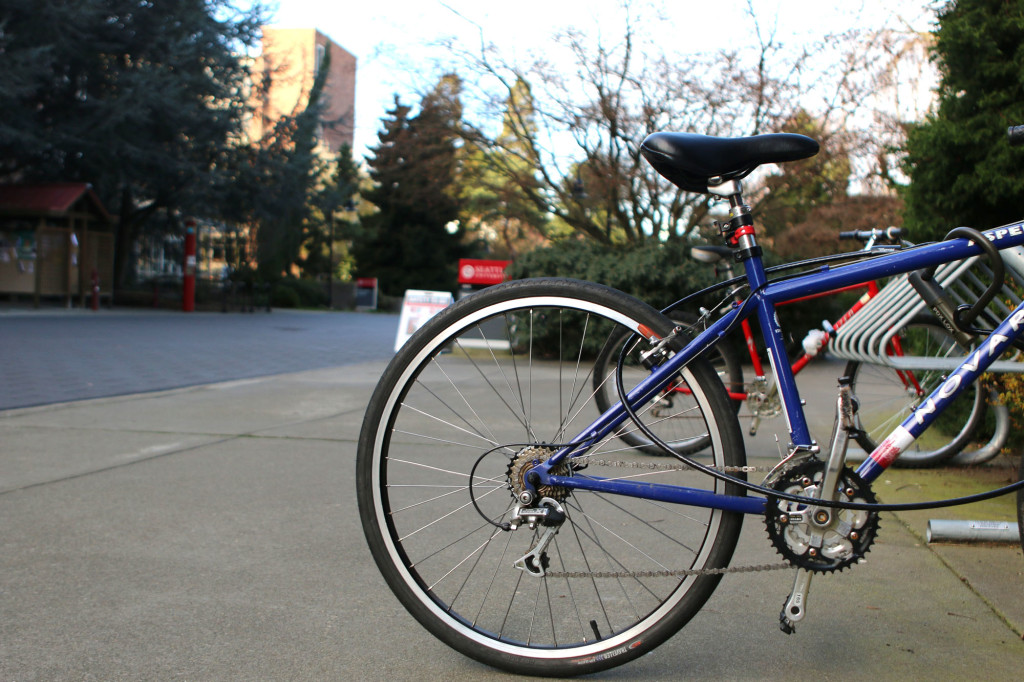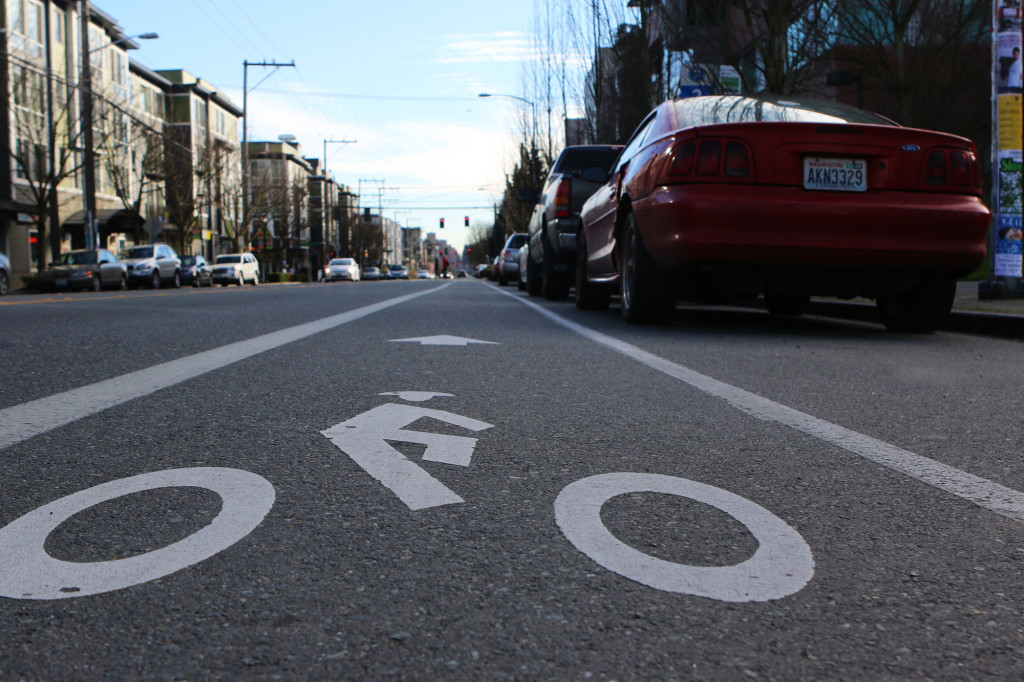Even more green bicycle lanes will soon paint the Seattle streets.
As America’s fastest-growing city, the demand for calmer streets has significantly increased among the Washington population. In November, voters pushed for quicker bus services and safer bike lanes and are now reaping the benefits of their advocacy.
Seattle lawmakers have chosen to designate lanes for streetcars on First Hill in response to this growing need for safety. They also plan to construct five to seven miles per year of separated bicycle lanes, focusing on busy streets where bicyclists are at greater risk.
In the aftermath of these decisions, spots for street parking appear to be on a continuous decline. Existing bus and bike lanes already eliminate parking spaces along popular streets such as Broadway, but future implementations throughout the city are estimated to remove hundreds more.
Along with these changes, new roadside leisure spots are transforming parking stalls citywide. Around 50 spaces have been decorated with patio spaces, trees and even libraries in the First Hill and Capitol Hill areas.
The Seattle Department of Transportation will be performing a downtown curb-space study to gain more insight for the mobility struggle ahead among car drivers, bicyclists and bus riders combined.
Prices for street parking have been raised by the city recently to help compete with rates of private garages. Depending on where you are in the city, and what time of day, prices can range anywhere from $1-$4 for a two hour time slot.
In comparison to the parking rates offered on campus, along with the limits placed on ORCA bus passes and the lack of more bike racks, students are unsure which mode of transportation to use.
“I had to take two buses to get to SU so I just decided to drive,” said senior Uy Hoang, a commuter since he transferred to Seattle U last spring. “I know a lot of people utilize the two hour [street] parking because parking is expensive.”
Fifth-year senior Andrea Burgos, collegium community ceader at the Lynn Collegium, understands the effort in trying to find a way to get to campus, having been a commuter student for all of her five years at Seattle U.
“Most commuter students here take the bus, but I know that parking prices are pretty unforgiving for those who have to use it,” said Burgos. “I’ve actually tried to do [street] parking, but with my class schedule I’m never able to move my car in time.”
Parking permits per quarter at the university costs $110 or $210, depending if the student is an evening or daytime commuter, respectively. Prices are cut down to $100 however, if students carpool.
“The school should make an event where people can find carpool buddies,” Burgos said. “Facilitating that would save a lot of us money.”
Even if parking proves to be too much of a hassle and busing is not feasible time-wise, those who opt for the two-wheeled ride to school seem to encounter just as much difficulty.
“There are never any places to park near campus anymore,” said sophomore commuter Brett Wiles. “It takes me an extra 15-20 minutes to bike, but that’s better than trying to find a space nowadays.”
Although several bike lanes have been put in place to add an extra layer of security for bicyclists, many argue that more still need to be implemented.
“It’s nice to have a lane to myself and my bike,” said junior commuter Bridget Coleman. “But it only lasts for a stretch of road, and then it’s back to the sidewalk or trying to dodge cars.”
While some businesses like the local Stumptown Cafe benefit from the increasing appearance of bike lanes, because most customers walk or ride-in, those living in apartments may be negatively affected. Now there is less space to park when people are moving furniture in and out of their apartments.
“My lease ends by this June and I’ll be headed to Portland,” said senior Jessica Legaspi. “It’s going to be really inconvenient having to walk my stuff down a block or so to get it in my truck.”
Only time will tell whether Seattle needs to reverse their plan of action, but as of yet, the birth of bus and bike lanes are well underway.
Vikki may be reached at Vavencena@su-spectator.com










